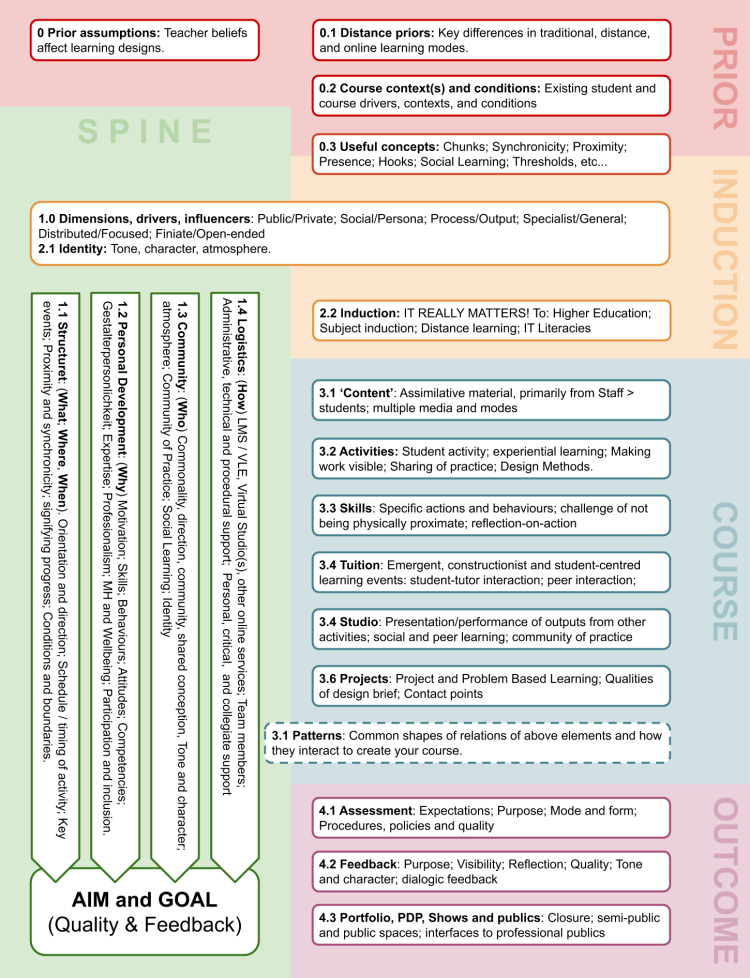As noted in this post, it’s been a bit quiet because time’s gone into producing the new guide for Creating Distance Design Courses, which is now available here: https://distancedesigneducation.com/creating-distance-design-courses/
It took a bit longer than expected (it started out as a blog post but ended up being a 20k word monster!), so there’s a few ways you can use it set out below.
Over the next few weeks I’ll think about other ways to make expand on it and make it more widely available – so any suggestions on this would be welcomed (e.g. blog posts on topics; videos; discussions/debates; workshop sessions; ? ). Just let us know ([email protected]).
Ways to use the guide.
If you already have a course ready for online and distance delivery, you might simply use this guide as a check or list of things to think about. Here’s a map of the contents:

If you have an existing blended course or are experienced and confident in blending modes of learning, you might simply want ideas and ways of thinking about parts of your course. In this case you can refer to individual sections based on what interests you (see map above).
If you need to re-plan an existing course, the chances are your overall structure and direction are fine but that you might need to focus on the transition (or transposition) to online and distance. Focusing on sections 0 Priors and 1 Spine and 2 Induction will likely be of most use to you here).
If you’re needing to start from scratch then, by all means, use the guide to do this (as a structure or as some way to begin the design process). But think about connecting with someone or a community to support you in doing this.
As always, if anyone has any feedback on the Guide or any suggestions of what else would be of help then please just get in touch ([email protected]).

Derek, some of us are paralysed in shock with the current crises, so triple thank you for creating this high-quality guide now. Very valuable for many people especially under the new conditions in 2020 and beyond. A great contribution to the community to keep improving how we teach design. Which, truth be told, hadn’t changed significantly in the last 50 years.
LikeLike